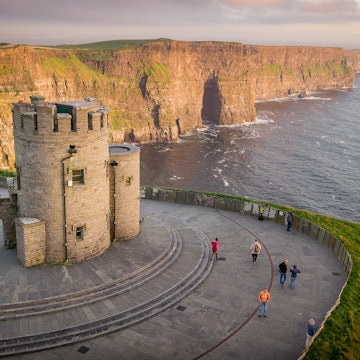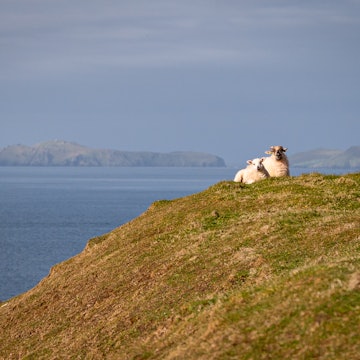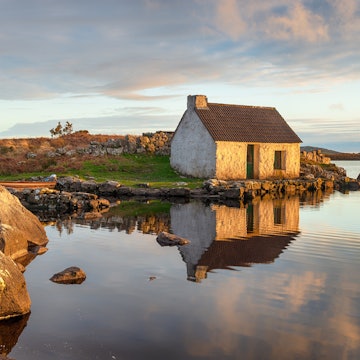
A first-time guide to Wales

From Pen-y-Fan to Anglesey, Wales is a land of landscapes and legends. Helen Hotson/Shutterstock
Known as Cymru (pronounced “kum-ree”) to locals, Wales is one of the four constituent countries of the UK. But it moves to its own rhythms, proudly celebrating its unique language, customs and culture.
From the lofty mountains of Bannau Brycheiniog (the Brecon Beacons) and Eryri (Snowdonia) to the cliff-edged, beach-sprinkled coastline of Pembrokeshire, Wales is a land of epic landscapes and lavish legends. A rearing dragon features on the national flag, after all, while the story of King Arthur was first written down by a Welsh monk in the 12th century.
Despite Wales’ small size, the rugged terrain and language here can throw up some challenges for first-time visitors. For example, while English is more widely spoken than Welsh, many locals favor Welsh greetings and place names, such as bore da in place of "good morning," and Yr Wyddfa instead of Mt Snowdon.
To help you navigate Wales’ mountains, valleys and coves, here’s our action plan for making the most of your foray to Cymru, the legend-filled Land of Song.

When should I go to Wales?
While dry weather can never be guaranteed, late spring and summer tend to be largely sunny in Wales. From June to August, beaches swell with sun worshippers, bottlenecks occur on walking trails to mountain summits, and glorious sunsets close each day near the coast. Weather-wise, this is the best season for walking the exposed-to-the-elements trails of the Pembrokeshire Coast Path and the mountain trails inland – though almost every route will be busy and there's heavy demand for accommodation.
If you can't make it here in summer, the weather is rarely a serious issue in spring and fall if you have decent waterproofs or an umbrella. (You may not need them, but it’s good to be prepared.) Early spring brings new life, with newborn lambs, daffodils and other wildflowers raising their heads, and fresh breezes as you climb to summits such as Pen-y-Fan.
Fall is another great time for hiking: the cooler weather is welcome when working up a sweat, and the autumnal red and orange leaves on the trees are a sight to behold. If you’re tempted to surf the breaks around the Gower Peninsula and elsewhere along the coast, the biggest swells arrive from fall to early spring.
Winter has its own charm. Open fires warm pubs, mulled wine ushers in festive vibes at Christmas markets and glittering snow dusts the peaks in Eryri National Park (Snowdonia) and Bannau Brycheiniog National Park (the Brecon Beacons). This is also a prime time for stargazing in Wales’ three Dark Sky Reserves. However, driving can be a challenge due to icy conditions, and strong winter winds can make walking risky on coastal paths and mountain trails.

How much time should I spend in Wales?
How long have you got? There's so much to see and do in Wales that it makes sense to take your time. A week is a good starting point, allowing time to see a city or two and enjoy the gasp-inducing scenery of the Welsh coast and mountains. Set aside two weeks for a more thorough circuit around Wales, visiting the mountains, coast and places off the tourist trail.
For a fleeting visit, Swansea and Cardiff are big for cultural institutions and history, while Tenby is a good starting point for a taste of the Pembrokeshire Coast, while Abergavenny is a handy gateway to Bannau Brycheiniog. In the north, the towns of Caernarfon, Blaenau Ffestiniog, Betws-y-Coed and Aberystwyth are convenient hubs for exploring Eryri National Park.
Is it easy to get in and around Wales?
Wales is easy to explore by car; plenty of visitors also travel the length and breadth of the country by public transport. Cardiff is a good starting point for exploring South Wales, Bannau Brycheiniog and the Pembrokeshire Coast, with convenient connections by road, rail and air to the rest of the country.
Swansea is another well-connected South Wales hub, providing easy access to the pretty Gower Peninsula. For North Wales, Eryri National Park and Anglesey, head north from Aberystwyth or follow the A55 or the North Coast Main Line railway along the northern shoreline.
Coming with a vehicle will help you get around more quickly, since the north and south of Wales are poorly connected by rail. Journeys by long-distance coach stick to major roads, missing the best of the scenery, while trips by local bus can be slow. If you drop in by air, Cardiff is the main hub for South Wales; for the north, consider flying into Liverpool and continuing by car, bus or train.
Wales’ wonderful hiking trails are a powerful magnet for walkers, and many of the start and end points can be reached by bus or train. Classic Welsh walks include the two-week Pembrokeshire Coast Path, Offa’s Dyke Path National Trail and the North Wales Pilgrim’s Way. Many visitors build a whole trip around the mountain trails of Bannau Brycheiniog and Eryri.
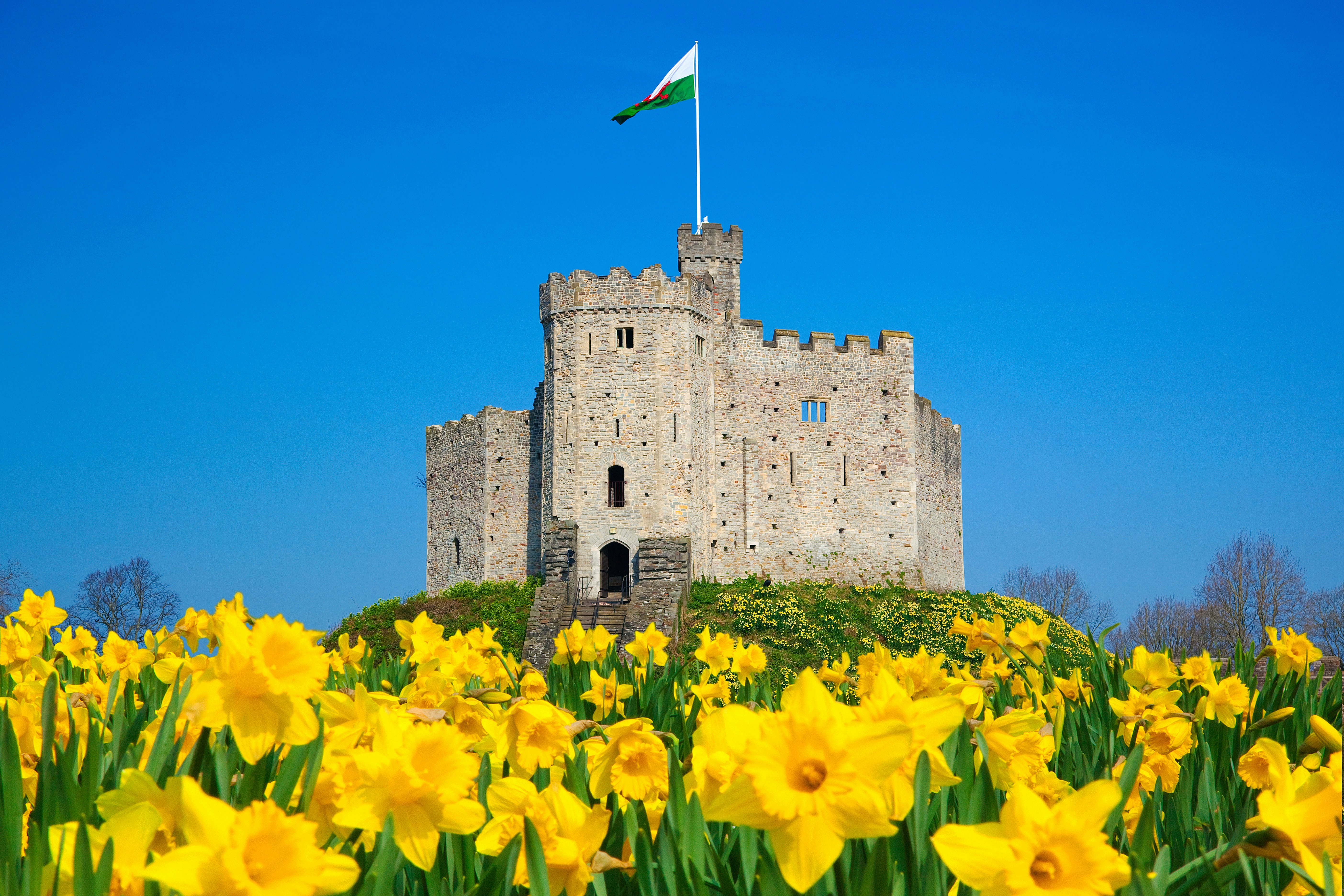
Top things to do in Wales
Wales can be divided into three geographical regions: North Wales, Mid Wales and South Wales; many visitors will stick to just one part of the country for their whole trip. The major population centers are concentrated in South Wales, while Mid Wales and North Wales are more mountainous and rugged, calling out to fans of the great outdoors.
Immerse yourself in history, culture and nightlife in Cardiff
With the Irish Sea and Bristol Channel lapping along its shoreline, the south of Wales is home to the country's biggest cities – Cardiff, Swansea and Newport – and the pick of the nation’s cultural institutions, fine dining and nightlife.
The capital (yet only since 1955), Cardiff is the beating heart of modern Wales. Centered on a Norman castle built over Roman foundations, the city is bustling, metropolitan and ever-changing – but also manageably human in scale. Beyond the castle, highlights include the buzzing nightlife and dining, the National Museum, and the Principality Stadium, where rugby heroes and music superstars share center stage.

Escape to the Vale of Glamorgan
Southeast of Cardiff is the rural Vale of Glamorgan, dotted with relics from Welsh mining history, time-scarred castles, vineyards (yes, here in Wales), and award-winning beaches along the Heritage Coast. This is a great place to escape the bustle of Cardiff for some peaceful reflection.
Heading west, you'll hit broad Swansea Bay and the city Swansea, with another historic castle and plentiful reminders of the area’s rich industrial history. Swansea was also the home of poet and playwright Dylan Thomas – a fact celebrated at museums and monuments around the city.
Wander the beautiful Gower Peninsula
From Swansea, it’s a short hop to the glorious Gower Peninsula – the UK’s first Area of Outstanding Natural Beauty and a soul-uplifting landscape of marshes, dunes, heathlands, beaches and rocky headlands. Despite the proximity of Wales' second city, it's a wonderful escape for walking, water sports, wild swimming and birding in the peninsula's serene wetlands.
Surfing, splashing or just walking along the 3 miles (5km) of sweeping sand at Rhossili Bay is an unforgettable experience. Enjoy a family-focused day at Mumbles, with its historic lighthouse and pier, or scramble to the end of the Worms Head at Rhossili for added adventure.
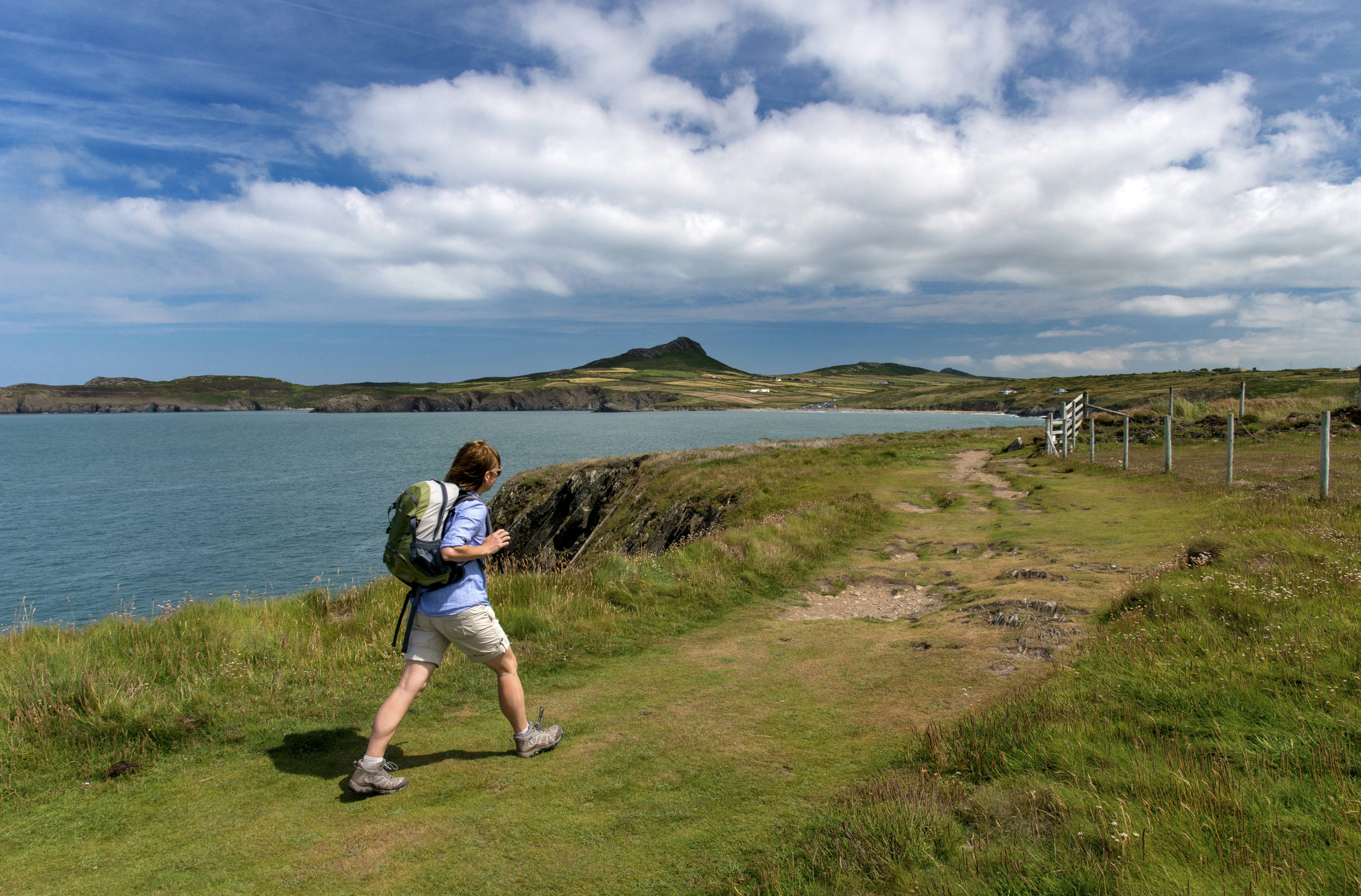
Explore the dramatic coastline of Pembrokeshire
A rugged expanse of exposed rocky cliffs and hidden fishing harbors and beaches, Wales’ southwestern tip ranks among Britain's most scenic stretches of coastline. Welcome to Pembrokeshire, home to the UK’s only coastal national park and the spectacular Pembrokeshire Coast Path. Linking St Dogmaels near Cardigan to Amroth near Carmarthen, this thrilling hike threads its way from cove to cove and cliff to cliff over two epic weeks, following windswept, clifftop paths.
Along Pembrokshire’s 186 miles (299km) of coastline, you’ll find over 50 beaches, from tiny coves to vast stretches of sand. Many visitors start in the pastel-colored seaside resort of Tenby – though the very best sands are tucked away on beaches such as Barafundle Bay, Marloes Sands, Freshwater West and Whitesands Bay (one of Britain’s best beaches for surfing). Then there’s dainty St Davids, the UK’s smallest city, which was once the home of the patron saint of Wales. The spectacular cathedral here was once a magnet for medieval pilgrims and Viking marauders.
Nature-lovers should keep their cameras handy, as there’s a high chance of spotting puffins, gannets, guillemots, razorbills and Manx shearwaters on the cliffs, and seals, porpoises and dolphins offshore. For the best wildlife watching, head to Skomer Island, off the headland at the south end of St Brides Bay – accessible via boat trips from Martin's Haven.
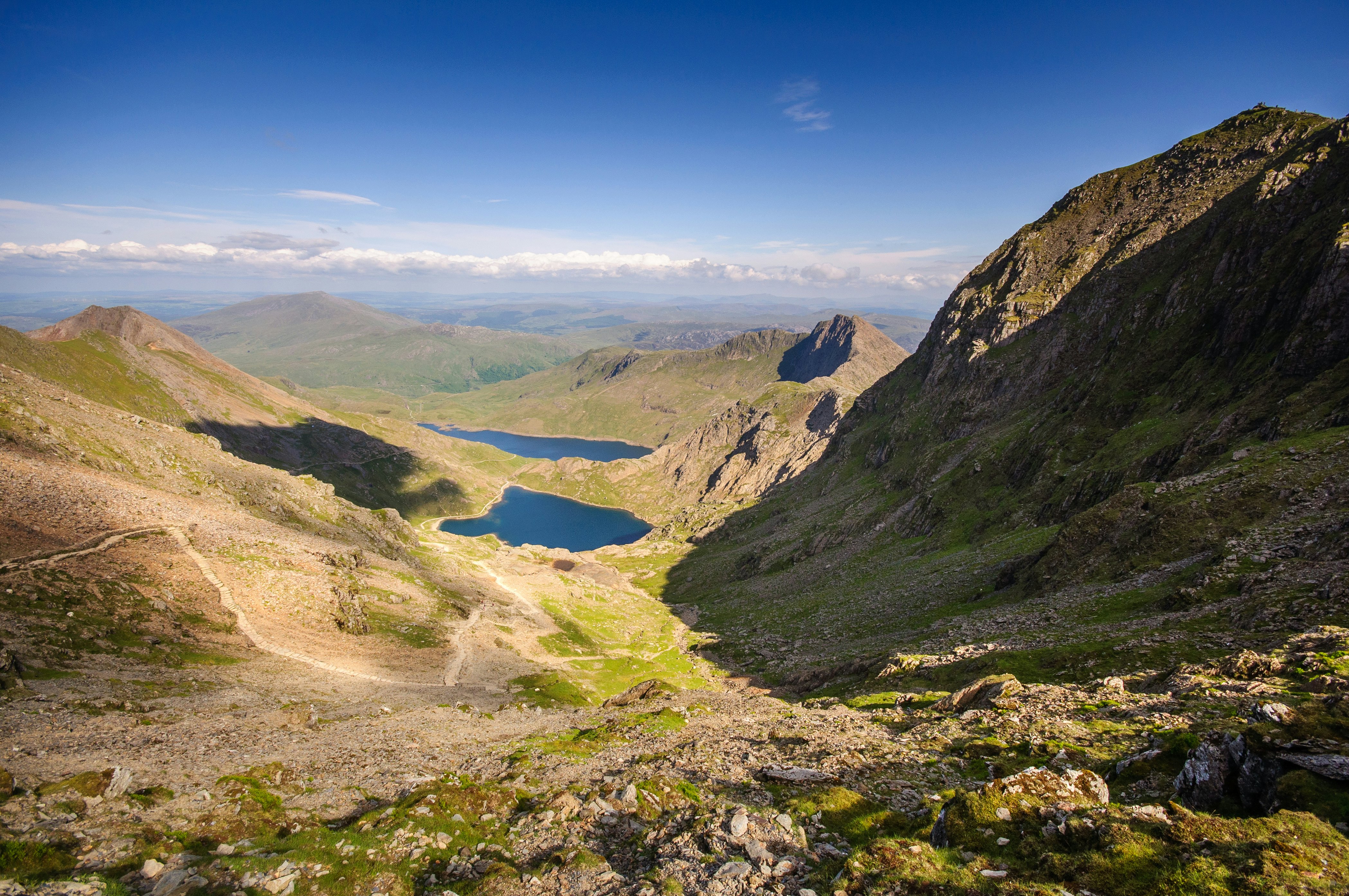
Hike through stunning scenery in Eryri (Snowdonia) in North Wales
More sparsely populated than the south of the country, North Wales brings in plenty of thrill-seekers and nature lovers. Eryri (Snowdonia) National Park alone attracts over 350,000 people a year, thanks to its scenic viewpoints and the trails snaking over 90 wind-buffeted mountain peaks.
The star of the show is 1085m (3560ft) Yr Wyddfa (Mt Snowdon), which can be conquered on foot via a challenging but rewarding hiking trail, or reached via a tiny mountain train. Alongside hiking, kayaking, wild swimming and bird-watching, other ways to keep active in this natural wonderland include jumping on springy cargo nets in an underground cavern at Bounce Below, whizzing down the world’s fastest zip line (over the Penrhyn Quarry) and wakeboarding on the pristine waters of the Llŷn Peninsula.
Lying a little off the radar, northeast Wales is a worthy add-on to a drive around Eryri. Here you'll find the Pontcysyllte Aqueduct and Canal, a 19th-century wonder that you can still cross by narrowboat or kayak; and Offa’s Dyke Path, a national hiking trail that follows a berm stacked up by an Anglo-Saxon king to mark out the England–Wales border.
Track down Celtic culture and wildlife on Anglesey
Across from castle-crowned Caernarfon, the huge island of Anglesey (Ynys Môn) is easily reached via two bridges across the Menai Strait. This storied isle teems with wildlife, and it was one of the last strongholds of the Celts and their druidic priests, evident in the many standing stones and ancient burial chambers scattered across the landscape.
Explore from the seaside town of Beaumaris, spot red squirrels in the grounds at Plas Newydd House and take a boat trip to Puffin Island. At Anglesey’s tip lies Holyhead, the departure point for ferries to Ireland, where you can walk along guillemot-thronged cliffs to the historic South Stack Lighthouse.

Enjoy the coast of Mid Wales
The county of Ceredigion in Mid Wales serves up postcard-pretty towns, green hills and uplifting coastal scenery, with the popular seaside resort of Aberystwyth as a conveniently central hub. Take a dreamy sunset stroll along the wide promenade, which wraps around the curved beach from Wales’ oldest pier. Here, you’ll find grand Victorian and Georgian houses, an electric funicular climbing towering Constitution Hill, and the ancient ruins of Aberystwyth Castle.
To the south, Cardigan Bay forms a sweeping arc along the west coast of Mid Wales, packed with sandy Blue Flag beaches, rocky coves, coastal communities and small fishing harbors. The bay is renowned for its resident bottlenose dolphins, with boat trips offering the chance to see them play in the frothy surf. Good bases include Aberaeron, Llangrannog and Cardigan, with the golden dunes of Poppit Sands a few minutes away by car or bus.
Escape to the scenic Llŷn Peninsula
To the north of Aberystwyth, you’ll find the town of Porthmadog and the eccentric village of Portmeirion – a colorful cluster of Italian Riviera–style buildings and gardens, home to a famous pottery-making center, and the filming location for the cult 1960s TV show The Prisoner.
Jutting west to the north of Porthmadog, the Llŷn Peninsula is a sweep of rolling hills that tumble down to marine-life-rich waters, wide sandy bays and sea stacks. If you're feeling energetic, the Wales Coast Path serves up multiday walks along a cliff-backed shoreline dotted with ancient castles, sandy bays and sea stacks.

Hike and stargaze in the Brecon Beacons (Bannau Brycheiniog)
Just west of Abergavenny, Bannau Brycheiniog (Brecon Beacons) National Park is Mid Wales’ most famous feature: a handsome sprawl of rugged highlands, open valleys, gushing rivers and superbly scenic drives. For walkers, Pen-y-Fan is the best-known peak, but many other heart-stopping trails lead through the Black Mountains and circle around the glacial Llyn y Fan Fach and Llyn y Fan Fawr lakes.
As Wales’ first Dark Sky Reserve, the park gives keen stargazers clear views of the constellations, particularly in winter (some B&Bs in the area even come with telescopes), while Sgwd-yr-Eira waterfall near Glynneath offers pure fairy-tale escapism. For more outdoor splendor, the Elan Valley Estate has reservoirs framed by historic dams and winding trails that call out to hikers and cyclists.
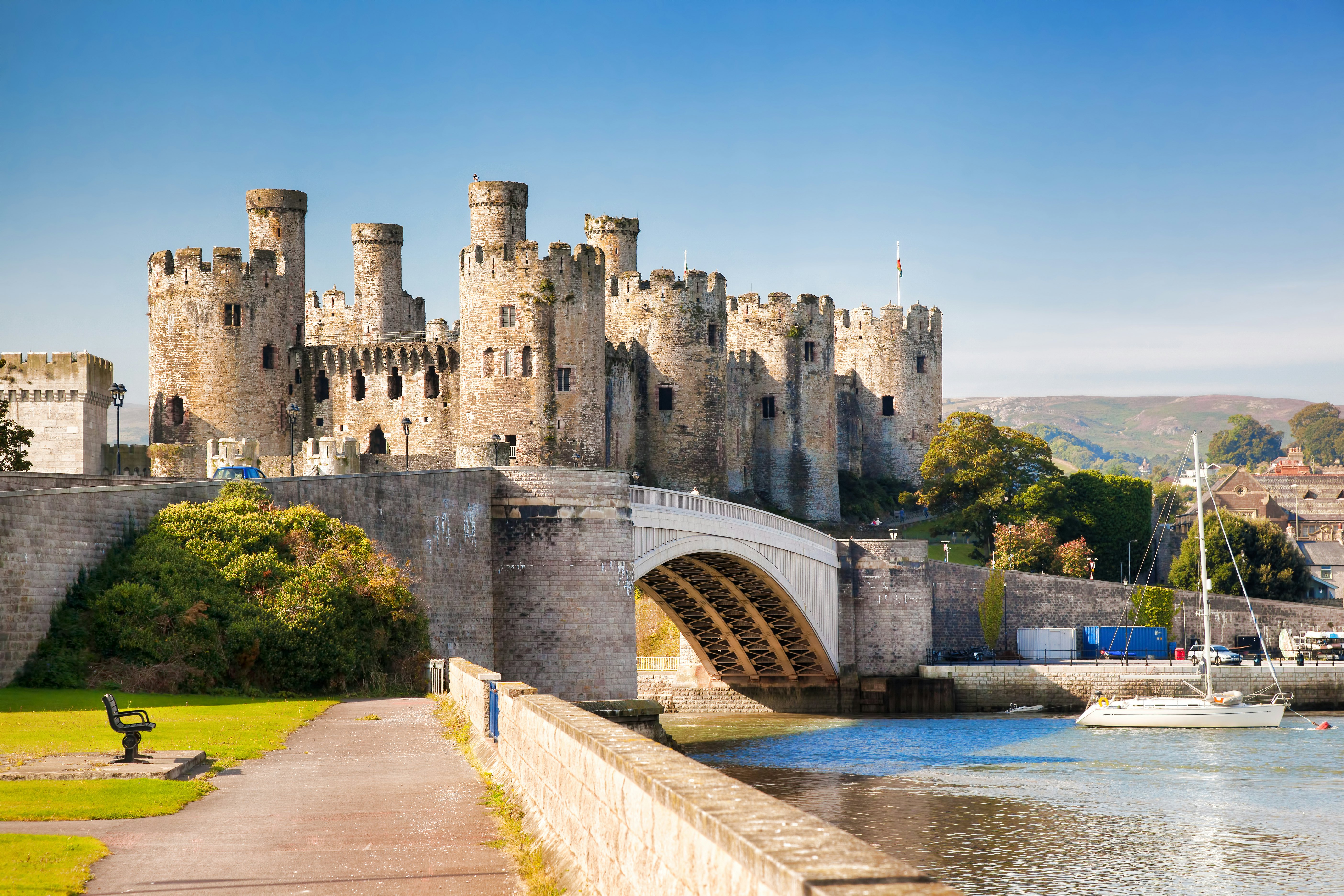
How much money do I need for Wales?
Costs in Wales are similar to costs in the rest of the UK. Accommodation and meals can be expensive, as can journeys by train (if you don’t book well ahead). Many visitors save money by camping, staying in Airbnbs or hostels, or choosing conventional B&Bs instead of hotels. If you're happy with a tent or a dorm, a daily budget of £60 (US$81) should be achievable; if you need a room to yourself and plan to eat out at cafes and restaurants, bank on £120 (US$162) upward per day.
When it comes to the sights, many museums are free (or tickets are inexpensive) – but admission isn't cheap for top sights such as Conwy Castle. Costs for organized activities such as wildlife-spotting boat trips and zip-lining can also add up, though children usually get a discount.
Here are some sample costs for travel in Wales.
Fresh Welsh cake: £0.75 (US$1)
Flat white coffee in a cafe: £3 (US$4)
To-go fish-and-chips: £10 (US$13.50)
Pint of lager in a pub: £5–6 (US$6.70–8.10)
Lunchtime sandwich at a cafe: £5–6 (US$6.70–8.10)
Main course in a pub or restaurant: £14 (US$19)
Tasting menu at a top restaurant: from £60 (US$81)
Museum entry fee: sometimes free, or from £5 (US$6.70)
A wildlife-spotting boat tour: £40 (US$54.10)
A hostel dorm bed: from £22 (US$29.80) per night
A double hotel room: from £70 (US$94.80) per night
What should I pack for a trip to Wales?
Welsh weather is unpredictable, with a good chance of rain – so pack layers, an umbrella and a waterproof and windproof jacket. The weather tends to be warm from April to September, with daytime highs ranging from 15°C (59°F) to 28°C (82°F), but cooler in the evenings, so a coat is useful even in summer. Things get significantly colder in winter (though snow is uncommon except in the mountains); bring a warm jacket, hat and gloves.
Aside from high-end bars and restaurants, where smarter attire is the norm, Wales isn’t particularly fussy about how people dress. The coast and mountains are all about adventure and relaxation, so dress practically and comfortably. When hiking, bring waterproof footwear with good grips and a change of socks for those inevitable slips into puddles and swampy patches.

Are there any can’t-miss Welsh delicacies I need to try?
Welsh food includes several specialties well worth seeking out. Along with lip-smacking fresh fish, crustaceans and shellfish, the Welsh coast is a good place to try laverbread (cooked seaweed, often served at breakfast).
Vegetarians can tuck into Glamorgan sausages (made with cheese and leek, and no meat) with a clear conscience, but should avoid cawl (a tasty broth of lamb, potato, leek and root vegetables) and faggots (minced offal meatballs with herbs).
When it comes to sweet treats, try Welsh cakes (flat, spiced currant cakes cooked on a bakestone) and bara brith (a dark, fruity tea loaf served sliced and buttered).
Do I need to know the Welsh language?
Wales is a bilingual country – but in practice, English is spoken by almost everyone, while only a fifth of people are fully fluent in Welsh. In major cities, speaking English is the norm; in more rural areas, you'll often hear the melodic national tongue. Locals learn Welsh at school, and you'll notice that Welsh names prominently feature on road signs, menus and in shops. Learning a few phrases will get a warm response from locals.
Note that many Welsh people are patriotic and extremely proud of their culture – so don’t be surprised if middle-aged men suddenly burst into a Welsh hymn on public transport, or if rugby supporters can barely contain their emotion during international tournaments. Many locals are happy to engage in conversation with strangers and tell you how great their country is.
Wales’ relationship with the English can be more prickly, thanks to the legacy of Edward I’s brutal invasion in the 13th century, the suppression of the Welsh language in past generations, and a perception that the British government views Wales as a lower-ranking partner. Mostly, this manifests as gentle rivalry, but some English travelers do report getting a cooler welcome in some corners of the country.
This article was adapted from Lonely Planet’s Wales guidebook, published in June 2025.















